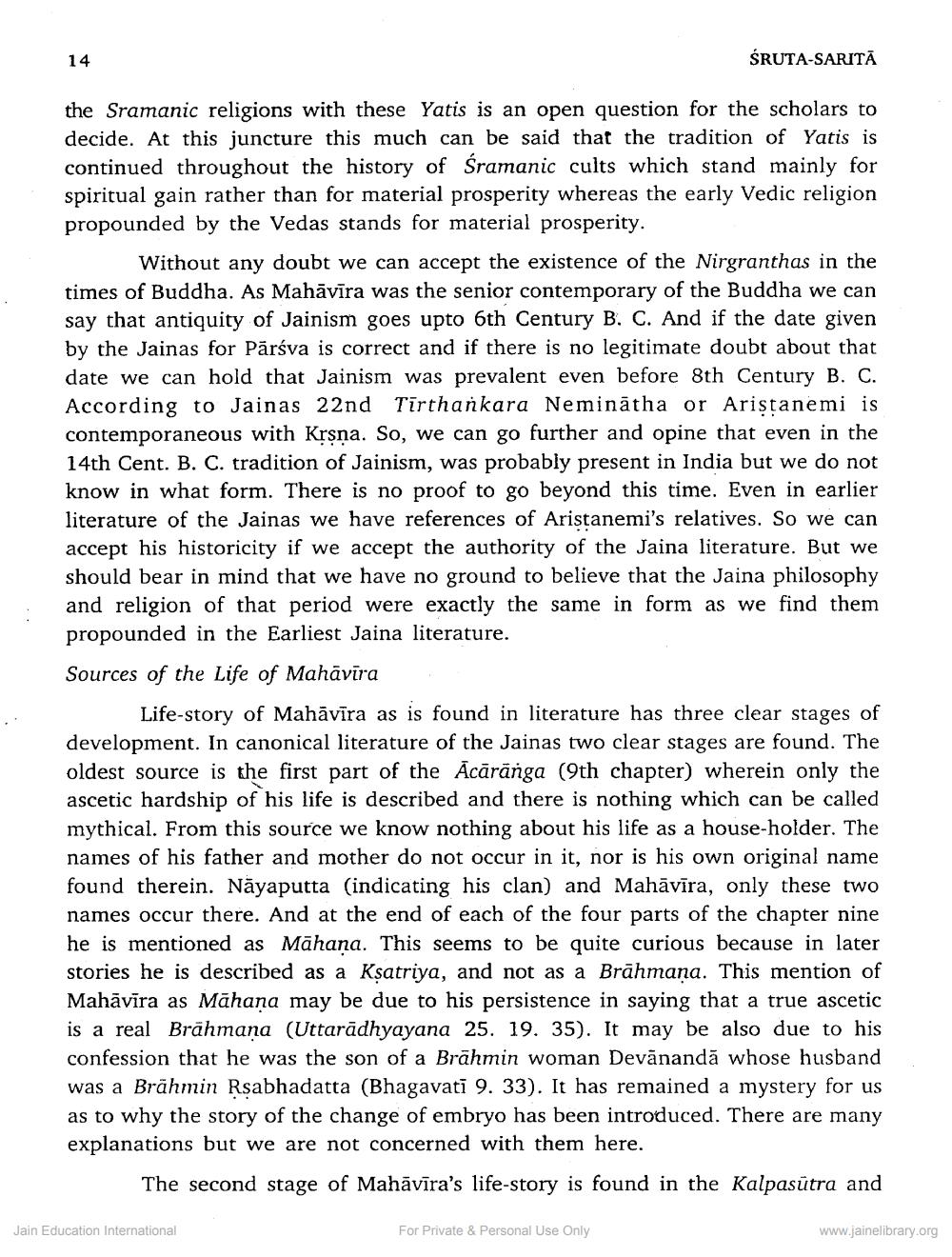________________
14
ŚRUTA-SARITĀ
the Sramanic religions with these Yatis is an open question for the scholars to decide. At this juncture this much can be said that the tradition of Yatis is continued throughout the history of śramanic cults which stand mainly for spiritual gain rather than for material prosperity whereas the early Vedic religion propounded by the Vedas stands for material prosperity.
Without any doubt we can accept the existence of the Nirgranthas in the times of Buddha. As Mahāvīra was the senior contemporary of the Buddha we can say that antiquity of Jainism goes upto 6th Century B. C. And if the date given by the Jainas for Pārsva is correct and if there is no legitimate doubt about that date we can hold that Jainism was prevalent even before 8th Century B. C. According to Jainas 22nd Tīrthankara Neminātha or Aristanemi is contemporaneous with Krsna. So, we can go further and opine that even in the 14th Cent. B. C. tradition of Jainism, was probably present in India but we do not know in what form. There is no proof to go beyond this time. Even in earlier literature of the Jainas we have references of Aristanemi's relatives. So we can accept his historicity if we accept the authority of the Jaina literature. But we should bear in mind that we have no ground to believe that the Jaina philosophy and religion of that period were exactly the same in form as we find them propounded in the Earliest Jaina literature.
Sources of the Life of Mahāvīra
Life-story of Mahāvīra as is found in literature has three clear stages of development. In canonical literature of the Jainas two clear stages are found. The oldest source is the first part of the Acāranga (9th chapter) wherein only the ascetic hardship of his life is described and there is nothing which can be called mythical. From this source we know nothing about his life as a house-holder. The names of his father and mother do not occur in it, nor is his own original name found therein. Näyaputta (indicating his clan) and Mahāvīra, only these two names occur there. And at the end of each of the four parts of the chapter nine he is mentioned as Māhana. This seems to be quite curious because in later stories he is described as a Ksatriya, and not as a Brāhmana. This mention of Mahāvīra as Mahana may be due to his persistence in saying that a true ascetic is a real Brāhmana (Uttarādhyayana 25. 19. 35). It may be also due to his confession that he was the son of a Brahmin woman Devānandā whose husband was a Brāhmin Rsabhadatta (Bhagavati 9. 33). It has remained a mystery for us as to why the story of the change of embryo has been introduced. There are many explanations but we are not concerned with them here.
The second stage of Mahāvīra's life-story is found in the Kalpasūtra and
Jain Education International
For Private & Personal Use Only
www.jainelibrary.org




